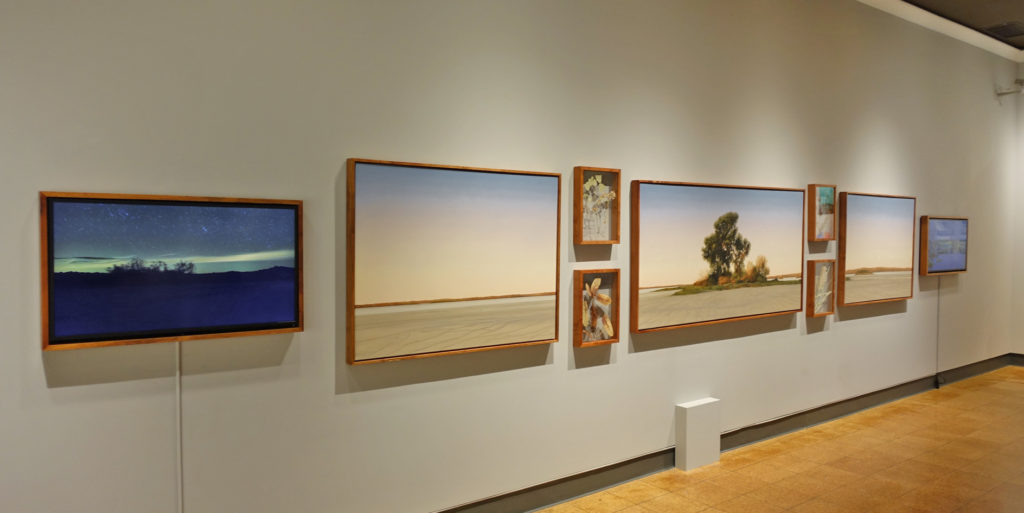The Sonoran Desert is home to the Gran Desierto de Altar. This land was once the interior of the Grand Canyon. For millennia, grains of sand were carved away and carried by the Colorado River and deposited here at the delta where the river meets the sea. This sand dominates for hundreds of kilometers, making it the largest extent of sand dunes in North America. Resting at the north end of the Gulf of California, this region is beautiful, harsh, open, and awe-inspiring. Miraculously, an array of freshwater springs – pozos – punctuate the hot sand and salt flats. These are the only fresh water in any direction. These enigmatic oases have been a confluence point for culture and life, the destination point for theTohono O’odham salt pilgrimage. Though art and science, this project sought to address foundational questions about these springs: What is the age and origin of this freshwater? How have these wetlands changed through time? What can we learn from them?


Beginning in 2015, Benjamin M Johnson began collaborating with Benjamin Wilder, a University of Arizona Researcher familiar with these springs and curious about their story. For three years, the team continuously visited to site, and Johnson created artwork in response to and as part of the scientific research. The first and most significant, a 36″x180″ painting of one of the most charismatic pozos that hosts a remarkable stand of cottonwood trees, titled Pozo del Alamo (above.)

As part of the research, the team collected botanical samples from the field, and prepared four of the most significant species of the springs. Johnson mounted them in suspension on acrylic, in the manner and format of a standard botanical sheet for collection.

The next works in this project are videos which accompany the painting and botanicals. One is titled Time (above.) Between 1909 and 1910, A Norwegian explorer named Carl Sofus Lumholtz led an expedition through Sonora Mexico and Southwestern Arizona which led to the publication ‘New trails in Mexico’ in 1912. In it, he details the journey in text and images. Among the photographs are images of freshwater springs, or pozos, that punctuate the Gran Desertio, which sustained the travellers and their horses. In 2018, Johnson filmed a 24 hour time-lapse of one of those springs, standing where Lumholtz stood over 100 years earlier, in the same month of January. This video begins and ends with Lumholtz’s original photograph. Though the screwbean mesquite and dunes appear unchanged, the headlights from the nearby highway and the air traffic above frame a land in flux. This piece is about time and its fluidity. About how much can shift in a day, and how much can remain constant over the course of a century.

The partner video is titled Place (above.) It is an exploration of the fauna that rely on these springs. Assembled from camera trap videos selected from hundreds of hours of footage captured by the team’s field cameras positioned at three different pozos in 2016 and 2017, this work not only explores what species visit these springs, but how these species interact with each other and how a place can change over time.


This transdisciplinary collaboration has sought to answer many questions about the pozos the Gran Desierto de Altar. Through the avenues of scientific research and artistic inquiry, the team uncovered new truths about the history of these springs. Lab studies of the water itself has revealed that the pozos are fed by ancient Colorado River water over 10,000 years old. This work has shed light on their complex, interwoven history and gestures towards a future of preservation for their life giving water.
Their project was one of six such collaborations combining art and science, collectively called 6&6. Visit the project website to find out more about the entire initiative.



